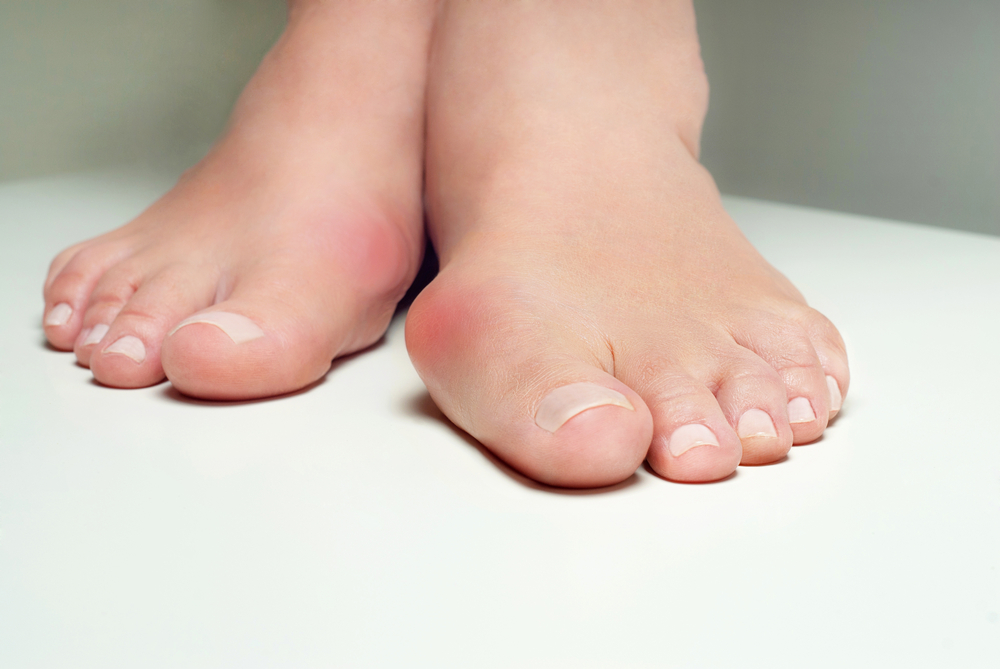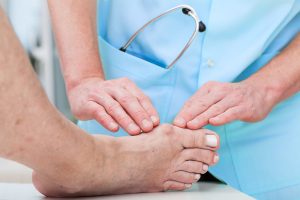
How Can I Relieve Pain From A Bunion?
Bunions are a common foot problem that can cause significant pain and discomfort. They develop when the big toe joint becomes misaligned, causing the toe to angle inward and the joint to protrude outward. Many people with bunions struggle to find relief from the pain, making it difficult to perform everyday activities. However, there are several effective ways to relieve bunion pain such as booking a podiatry appointment. In this blog post, we will explore some of the best options available. Whether you are looking for home remedies or professional treatment, we’ve got you covered.
Symptoms Of Bunions
Bunions are a common foot problem that can cause pain and discomfort. They are characterised by a bony bump at the base of the big toe, which can become inflamed and sore. Here are some common symptoms of bunions:
- Pain or discomfort at the base of the big toe
- Swelling or redness around the bunion
- Difficulty walking or wearing shoes due to the bunion’s size or shape
- Corns or calluses on the toes or feet due to friction from the bunion
- Limited movement of the big toe
Home Remedies For Bunion Pain Relief
Bunions are a common foot condition that can be quite painful. While the most effective treatment for bunions is to see a podiatrist, there are some home remedies that may provide relief from the pain. Here are some of the most effective home remedies for bunion pain relief:
- Ice: Applying ice to the affected area can help reduce swelling and inflammation. Wrap an ice pack or a bag of frozen peas in a towel and apply it to the bunion for 15 to 20 minutes at a time, several times a day.
- Epsom salt soak: Soaking your feet in warm water with Epsom salt can help ease the pain of bunions. Add 1/2 cup of Epsom salt to a basin of warm water and soak your feet for 20 minutes.
- Bunion pads: Bunion pads can be purchased at most drug stores and can provide a cushion between your bunion and your shoe. This can help reduce friction and pressure, and in turn, relieve pain.
- Proper footwear: Wearing shoes that are too tight or too narrow can exacerbate bunion pain. Choose shoes that have a wide toe box and offer good support.
- Toe spacers: Toe spacers can help realign the toes and reduce pressure on the bunion. They can be purchased at most drug stores or online.
While these home remedies may provide some temporary relief from bunion pain, it’s important to see a podiatrist if your bunions are causing you significant discomfort. A podiatrist can recommend more effective treatment options, such as custom orthotics or surgery, if necessary.

Non-Surgical Treatments For Bunions
Bunions can be a painful and uncomfortable condition, but fortunately, there are a variety of non-surgical treatments available to help manage the pain and prevent the condition from worsening. Here are some non-surgical treatments that a podiatrist may recommend:
- Orthotics: A podiatrist may recommend special shoe inserts called orthotics to help redistribute the weight on your foot, relieve pressure and reduce pain.
- Padding and Taping: The podiatrist may use padding and taping techniques to protect the bunion from rubbing against shoes, which can help reduce pain and prevent further damage.
- Medications: Over-the-counter pain relievers, such as acetaminophen or ibuprofen, can help alleviate the pain and inflammation caused by bunions.
- Injection therapy: A corticosteroid injection may be recommended by the podiatrist to help reduce inflammation and pain associated with the bunion.
- Physical therapy: Specific exercises may be prescribed by the podiatrist to help strengthen the muscles and improve flexibility in the foot, which can help reduce pain.
Surgical Treatment Options For Bunions
Surgical treatment for bunions is usually considered when non-surgical treatments have failed to provide relief or the bunion has progressed to a severe stage causing significant pain and discomfort. The goal of bunion surgery is to realign the affected joint, relieve pain and improve the function of the foot.
There are different surgical options available depending on the severity of the bunion and the underlying cause. One of the most common surgical techniques is called osteotomy, which involves cutting and repositioning the bone to realign the joint. Another technique involves removing the damaged tissue and realigning the joint using wires or screws. In some cases, the surgeon may fuse the affected joint to provide stability and reduce pain.
The type of surgery recommended will depend on factors such as the patient’s age, overall health, the severity of the bunion, and the goals of the surgery. The podiatric surgeon will discuss the most appropriate surgical option and the expected outcome of the surgery with the patient.
After the surgery, the patient will be required to wear a protective boot or cast to keep the foot immobilised and promote healing. Physical therapy and exercises may also be recommended to help regain strength and flexibility in the foot.
It is important to note that like any surgery, bunion surgery carries some risks, including infection, nerve damage, and stiffness in the affected joint. The podiatrist will discuss these risks with the patient and take necessary precautions to minimise them.
Overall, surgical treatment for bunions is an effective option for providing relief from pain and discomfort caused by severe bunions. It is essential to consult with a podiatrist to discuss the most appropriate treatment options for each individual case.
When To Seek Professional Help
If you are experiencing persistent bunion pain or if your bunion is affecting your daily activities, it is important to seek professional help from a podiatrist. A podiatrist can perform a thorough examination of your foot, diagnose your condition and recommend the best course of treatment.
Additionally, if you have diabetes or poor circulation, it is important to seek prompt medical attention as bunions can cause serious complications for these conditions.
It is also recommended to seek professional help if you notice any signs of infection such as redness, swelling or warmth around the affected area.
Remember, early intervention is key in preventing the progression of bunion deformities and associated complications. Don’t hesitate to seek professional help if you are experiencing persistent bunion pain or any other concerning symptoms.
Contact Upwell Health Collective Today
At Upwell Health Collective, our experienced podiatrists are here to help you manage and treat your bunion pain. Don’t let bunions stop you from enjoying your daily activities. Contact us today to schedule an appointment and let us help you get back on your feet pain-free.
Please get in touch with us at Upwell Health at (03) 8849 9096 or book an appointment today.
